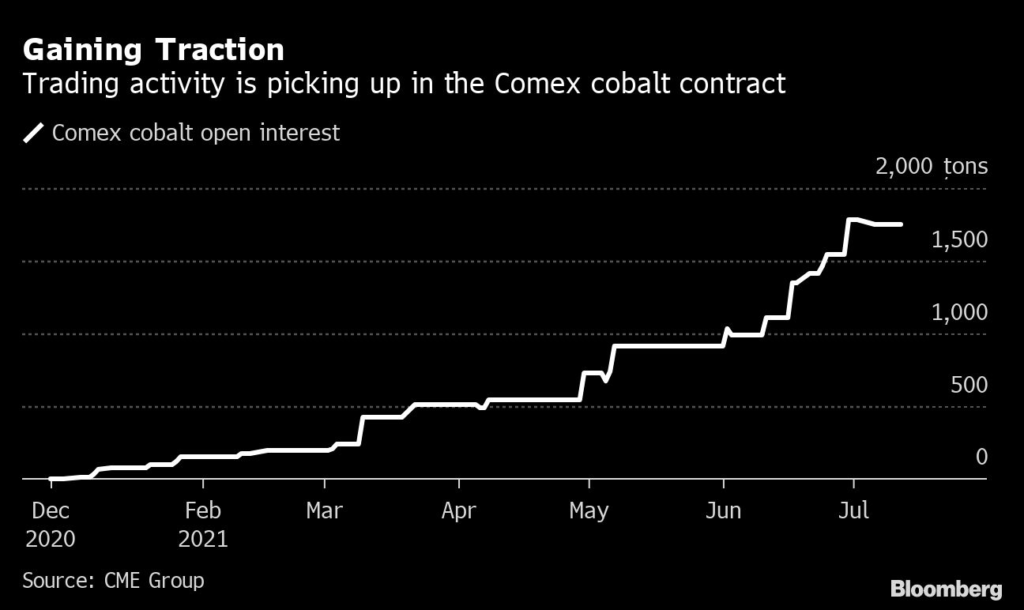New York beating London as trading hub for booming cobalt market

Cobalt futures trading is taking off in New York as CME Group Inc. steals a march on its rival bourse, the London Metal Exchange, in the volatile and rapidly growing market for the critical battery metal.
Trading activity in CME’s contract has been gathering steam since its launch in December, with a flurry of recent transactions in long-dated contracts pointing to significant hedging activity by industrial users.
Managing price risks has become a fraught issue in the cobalt industry, with top producer Glencore Plc forced to renegotiate contracts with some of its key Chinese customers in 2018 after prices plunged. The Comex contract has rallied 57% in the year to date, making cobalt one of the best-performing industrial commodities this year.
Interest in cobalt futures is being boosted by carmakers and battery companies looking to hedge their price exposure, and by banks like Goldman Sachs Group Inc., which recently has been buying up physical cobalt as it seeks to build a more active trading business, according to people familiar with the matter. A Goldman Sachs spokesman didn’t respond to a request for comment.
Related Article: Small miners aim for European supply chain for EV independent from China
While trading volumes are still small, CME Group has ambitions to become the dominant pricing venue in the market for the material that is extensively used in electric vehicle batteries. The bourse has already extended the length of the tradeable futures curve twice since launch, responding to requests from industrial clients, CME Group’s global head of metals, Young-Jin Chang, said in an interview.
“With any new contract like this, the first movers tend to be the physical industry with their hedging needs,” Chang said. “These kinds of tools to be able to manage fixed costs and secure profit margins are becoming more and more important.”

A further surge in volumes on Comex would be a setback for the London Metal Exchange, CME Group’s larger rival in the industrial metals markets, which has been looking to draw the industry toward its own cobalt contracts for years.
The LME launched a physically-deliverable cobalt contract in 2010, but after a promising start, trading activity has ebbed in recent years amid concerns that some of the metal in its warehouse network might be linked to child labor, which prompted the bourse to undertake a supply chain review. It launched a second cash-settled contract in 2019, but there’s been no trading activity so far.
A LME spokeswoman declined to comment.

The rapid growth of the CME Group contract — which settles against the same Fastmarkets index as the LME offering — is down in large part to the energetic marketing efforts of brokers channeling clients to the Comex product, according to two cobalt traders familiar with both exchanges.
By contrast, London brokers have been less eager to set up clients to trade LME cobalt, primarily due to concerns about cost overheads, they said.
To be sure, the Comex contract is still a long way from gaining widespread acceptance, and the small size of the physical industry may place a natural cap on the growth of futures trading. Global annual cobalt production is currently about 130,000 tonnes, compared with about 20 million tonnes for copper and 65 million tonnes for aluminum, the largest base metals markets by value and size, respectively.
(By Mark Burton and Jack Farchy)
{{ commodity.name }}
{{ post.title }}
{{ post.date }}

Comments